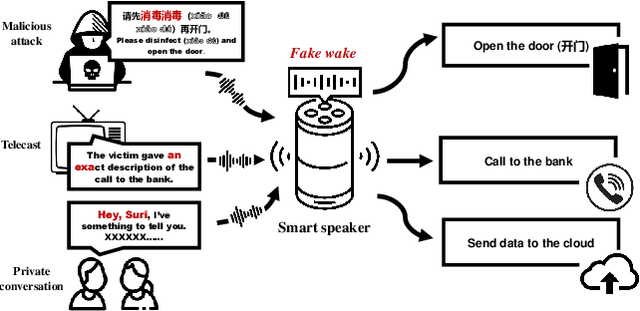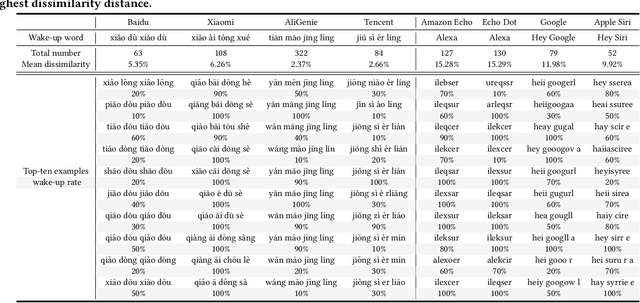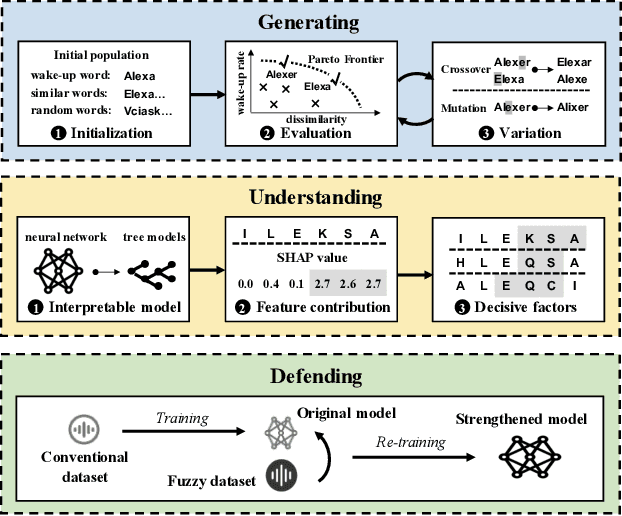Kaibo Wang
FakeWake: Understanding and Mitigating Fake Wake-up Words of Voice Assistants
Sep 21, 2021



Abstract:In the area of Internet of Things (IoT) voice assistants have become an important interface to operate smart speakers, smartphones, and even automobiles. To save power and protect user privacy, voice assistants send commands to the cloud only if a small set of pre-registered wake-up words are detected. However, voice assistants are shown to be vulnerable to the FakeWake phenomena, whereby they are inadvertently triggered by innocent-sounding fuzzy words. In this paper, we present a systematic investigation of the FakeWake phenomena from three aspects. To start with, we design the first fuzzy word generator to automatically and efficiently produce fuzzy words instead of searching through a swarm of audio materials. We manage to generate 965 fuzzy words covering 8 most popular English and Chinese smart speakers. To explain the causes underlying the FakeWake phenomena, we construct an interpretable tree-based decision model, which reveals phonetic features that contribute to false acceptance of fuzzy words by wake-up word detectors. Finally, we propose remedies to mitigate the effect of FakeWake. The results show that the strengthened models are not only resilient to fuzzy words but also achieve better overall performance on original training datasets.
JST-RR Model: Joint Modeling of Ratings and Reviews in Sentiment-Topic Prediction
Feb 18, 2021



Abstract:Analysis of online reviews has attracted great attention with broad applications. Often times, the textual reviews are coupled with the numerical ratings in the data. In this work, we propose a probabilistic model to accommodate both textual reviews and overall ratings with consideration of their intrinsic connection for a joint sentiment-topic prediction. The key of the proposed method is to develop a unified generative model where the topic modeling is constructed based on review texts and the sentiment prediction is obtained by combining review texts and overall ratings. The inference of model parameters are obtained by an efficient Gibbs sampling procedure. The proposed method can enhance the prediction accuracy of review data and achieve an effective detection of interpretable topics and sentiments. The merits of the proposed method are elaborated by the case study from Amazon datasets and simulation studies.
 Add to Chrome
Add to Chrome Add to Firefox
Add to Firefox Add to Edge
Add to Edge